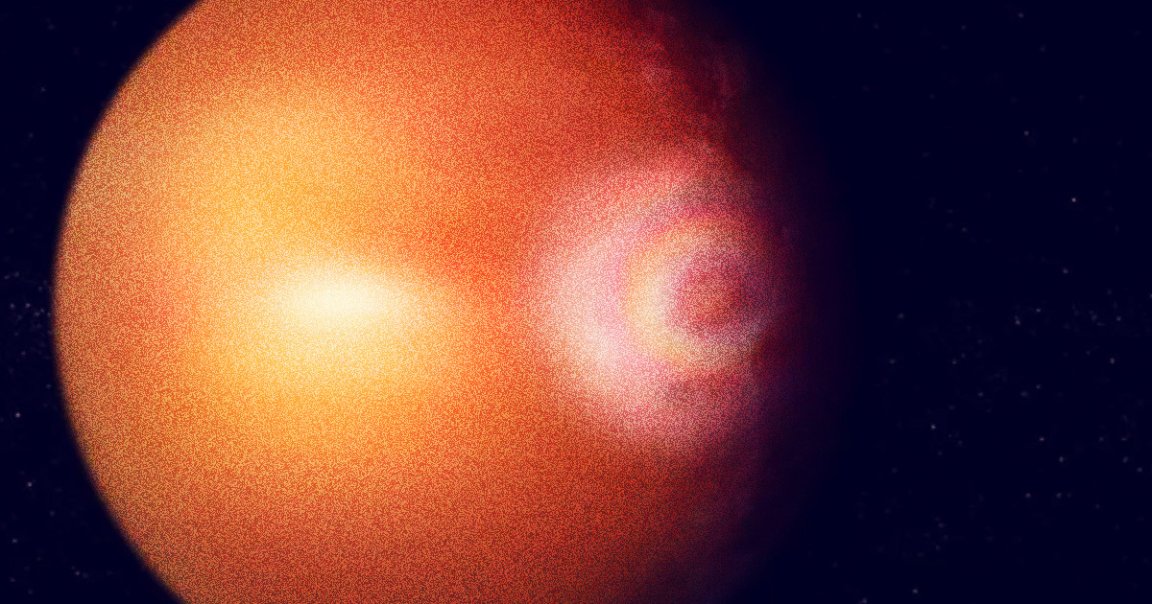
Glory Hallelujah
Astronomers have spotted signs of an unusual, rainbow-like pattern decorating the surface of WASP-76b, a “hot Jupiter” exoplanet some 637 light-years away.
The circular “glory” lights, if confirmed, would be the first of their kind detected outside of our solar system. They take the form of concentric rings of colorful light that only form under a specific set of circumstances — and while they may look like rainbows, they’re caused by a slightly different phenomenon.
Rainbows appear due to visible light wavelengths being refracted while traveling through denser water droplets and lower-density air. Glory lights, on the other hand, are the result of diffraction, light passing between a narrow opening, such as the gaps between water droplets in clouds.
“Never before have we seen these colorful, concentric rings on an extrasolar body,” said University of Warwick astronomer Thomas Wilson, coauthor of a new study published in the journal Astronomy & Astrophysics, in a statement. “So this first exoplanetary glory, if confirmed with future studies, would make WASP-76b a truly unique body, and give us a beautiful tool for understanding the atmospheres of distance exoplanets and how habitable they could be.”
Sunshine and Rainbows
The surface of WASP-76b, which was first discovered in 2013, is anything but sunshine and rainbows. The gas giant’s surface is extremely hot, and even the side that faces away from the Sun can reach blistering temperatures of 2,400 degrees Celsius.
It’s so hot, in fact, that molten iron rains down from the sky every day. The strange world also has less mass than Jupiter, but is almost double its size, because it orbits its host star twelve times as close as Mercury orbits the Sun, with intense radiation effectively puffing it up like a popcorn kernel.
Wilson and his colleagues observed changes in light as the exoplanet passed in front of its star over three years. They were astonished by just how much light emanated from the region where night meets day.
“This is the first time that such a sharp change has been detected in the brightness of an exoplanet,” said lead author and researcher at the Institute of Astrophysics and Space Sciences in Portugal, in the statement. “This discovery leads us to hypothesize that this unexpected glow could be caused by a strong, localized and directionally dependent reflection — the glory effect.”
To confirm that we are in fact looking at a glory effect on a distant exoplanet, the astronomers are now suggesting followup research using NASA’s James Webb Space Telescope to have a closer look.
More on rainbows: NASA Releases Breathtaking Rover Photo of “Rainbow” on Mars